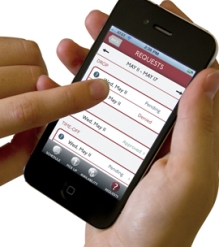  According to a new research report from the analyst firm Berg Insight, the number of users of smartphone based workforce management services in Europe and North America is forecasted to grow from 0.8 million in 2012 at a compound annual growth rate (CAGR) of 21 percent to reach nearly 2.5 million by 2018.
Industry sectors leading the adoption of workforce management solutions that can improve operational efficiency for organisations with many mobile employees include construction, distribution, healthcare and companies with extensive field service operations.
Standardised workforce management smartphone apps enable small and medium size companies without the resources to implement custom IT solutions to adopt mobile workforce management solutions. “Companies and organisations in many parts of the world are also gradually adopting lone worker protection solutions to comply with occupational safety regulations and reduce employee insurance costs,” says André Malm, Senior Analyst at Berg Insight. He adds that lone worker protection services often rely on dedicated GPS location devices featuring alarm buttons and man down detection sensors.
Family locator services is the largest segment for people monitoring and safety solutions based on GPS-enabled smartphones or dedicated cellular/GPS locator devices. “Many parents have discovered free and low cost apps that can turn a smartphone into a locator device that enable monitoring of family members such as children or elderly” continues Malm. Besides family locator services, there are many location sharing services that focus on slightly different needs and use cases. These location sharing services enable users to control when their location is shared, with whom and for how long. There were an estimated 30 million active users of family locator and location sharing apps in Europe and North America at the end of Q2-2013.
Dedicated location devices can be better suited than smartphones for some people locator services, for instance those that address the needs of people caring for persons suffering from medical conditions such as cognitive limitations, epilepsy and cardiac problems. Device vendors are also addressing the growing market for systems that assist seniors living at home or in care homes. These systems are often called telecare systems or social alarms in Europe and Personal Emergency Response Systems (PERS) in North America. Berg Insight estimates that there are now 6 million users of first generation telecare systems connected to wireline networks in Europe and North America. The next generation wearable telecare devices with cellular connectivity are now being launched. These devices are better suited for seniors that are becoming increasingly active. |